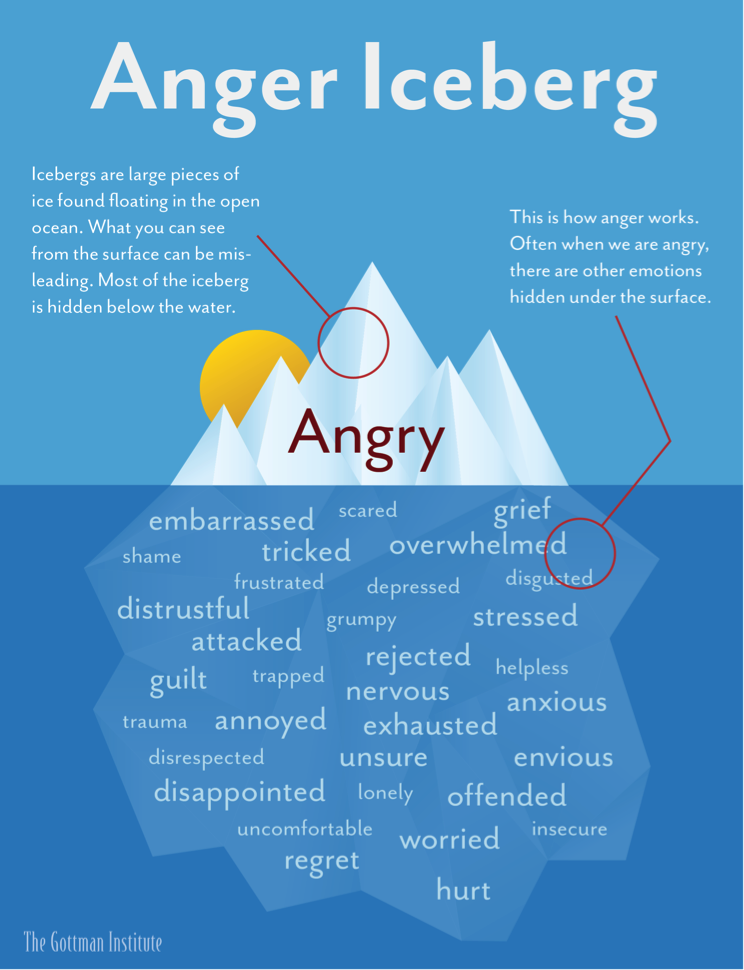‘GET BACK IN HERE NOW! I SAID NOW!’ – my new manager’s voice bellowed out across the office floor. Everyone froze. I was not long out of university so I quickly assumed this level of anger at work was acceptable.
I’d already seen a manager throw a hole-punch at one of his team (narrowly missing). It was an ad agency in the 1990s so you can imagine that was only one of a number of colourful moments!
And then there was the time I was being shown how to ‘interview’ a candidate, only the senior manager I was supposed to be learning from ended up trying to punch the candidate. (It ended with a lot of ‘tie pulling’, but no punches actually landing, you might be relieved to hear).
Have you ever ‘seen red’ at work? Or been on the receiving end of someone else’s ‘red mist’ moment?
Over the past 20 years, corporate life has changed. Overt displays of anger are no longer acceptable. We have an expectation that we should feel safe at work (although that’s often not the case). But while our language has become more comfortable with the notions of acceptance, mindfulness and meditation, the numbers show increasing levels of anger-driven incidents.
As Leon Seltzer, clinical psychologist and author, notes: ‘The increase in road rage, drive-by shootings, high school and post office killing sprees [and] the attention given to acting-out, out-of-control anger may never have been greater.’ He goes on to say that ‘no fewer than 50 books on anger geared toward the layperson have emerged in the past 15 years or so.’ Anger appears to be a hot topic; it’s clearly not declining.
Anger is typically a destructive emotion. In fact, some researchers believe that anger is not actually an emotion at all. Seltzer considers it a secondary emotion: ‘Anger is almost never a primary emotion, even when it seems like an instantaneous, knee-jerk reaction to provocation, there’s always some other feeling that gave rise to it. And this feeling is precisely what the anger has tried to hide or control.’
Have a look at the image below to get an idea of what feelings your anger might be hiding.
 Seltzer goes on to say:
Seltzer goes on to say:
‘It’s my strong belief that many, many millions of people worldwide are addicted to anger because of its illusorily empowering aspects – it’s every bit as addictive a drug as alcohol or cocaine’.
Have you checked your level of addiction to anger lately?
We use anger to cover up, and avoid, our more vulnerable feelings. To empower us when we are feeling disempowered. Anger can help us to feel invulnerable in the face of feeling worried, ignored, insecure, unimportant, hurt or embarrassed or when we are responding to criticism or dismissal.
There is also a neurochemical explanation of why we switch so quickly into anger. Steven Stosny in his book Treating Attachment Abuse notes that anger can act as a sort of ‘psychological salve’. The brain secretes norepinephrine during anger, which we experience as an analgesic. In other words, when we are facing physical or psychological pain, our bodies release a chemical to numb it. No wonder anger can be addictive.
So, even though we know it is likely to damage both our wellbeing and our relationships we choose it to self soothe, it makes us feel better, or at least ‘less bad’.
Like all behaviour, anger is contagious
In Managing Your Emotional Culture, Sigal Barsade and Olivia A. O’Neil discuss the impact even one person’s anger can have on the culture of an organisation: ’If a manager consistently comes to work looking angry… they may cultivate a culture of anger.’
Anger may become the norm and, like all feelings in the workplace, it will be contagious.
One study found that employees from multiple organisations actually felt more comfortable expressing anger on the job than joy (they reported expressing anger three times as often). You can imagine what it’s like to work there. You might even be working somewhere like that now.
Anger, show yourself
As leaders, we need to be looking for where the anger is in our organisation. People aren’t less angry, so how are they managing their anger – where is it playing out? It’s easy to assume it will be found in bullying claims and tribunals. But that’s taking a surface view. Of course that has to be addressed, but we need to look deeper. Is there anger between management layers or different departments? Is there anger between your team and your customers? Look closely for where the anger is occurring and playing out in your business.
Is anger always bad?
In Susan David and Christina Congleton’s article Emotional Agility, they note that ‘research shows attempting to minimise or ignore thoughts and emotions serves only to amplify them’. They go on to say that: ‘Effective leaders don’t buy into or try to suppress their inner experiences. Instead they approach them in a mindful, values-driven, and productive way —developing what we call emotional agility.’
I’ll discuss emotional agility in more detail next week, but at its core is the idea that if we are trying to build more human workplaces, we need to accept that humans have emotions.
It’s about being responsible and accountable with our behaviour, and conscious of the kind of culture we’re trying to create, not becoming emotionless.
We find ways to justify our anger
Sometimes we blame our anger on a values clash or moral outrage. It’s getting angry for the ‘right’ reason – somebody standing for something that is reprehensible to us. We’ve all felt that way at some stage. Where someone’s view of the world is so different from our own we assume we could never find common ground.
I recently had a meeting with a colleague, actually an old boss, who I hadn’t seen in more than 10 years. When we worked together we didn’t always see eye-to-eye. I assumed that would still be the case. He probably assumed the same. But, an interesting thing had happened…
Time.
Life.
And I found myself feeling there was a lot more that untied us than divided us.
I genuinely believe there is more that connects us all than divides us. If we could just take the time to stave off our angry initial response, switch assumptions for genuine curiosity and really listen we might just learn something. And we might just teach something. Maybe both, and we might walk away a little more open-minded, a little more accepting, and a little more human.
So, what can we do if anger hits?
Leon Seltzer dedicated his career to understanding anger and has developed this two-step process for when anger takes over:
1. RELAX Anger is your body preparing for a fight vs. flight response, the key is to find a way to calm this physical ‘fighting energy’ down in whatever way works for you: focusing on a long out breath, counting to 10… sometimes you need to discharge the energy through expending some – a fast walk around the block or similar.
2. REASSESS Once you have calmed your body and mind down, you are much more able to view the situation from a more positive perspective. You can ask yourself:
Did he (or she) really mean what I think I heard them say? Am I assuming something that I actually need to check?
Is this situation as terrible as it feels right now? Am I possibly exaggerating its significance? Taking it too seriously?
Are their interests or concerns maybe just as important, and legitimate, to them as mine are to me [i.e., do all you can to challenge your possible self-righteousness in the matter]?


